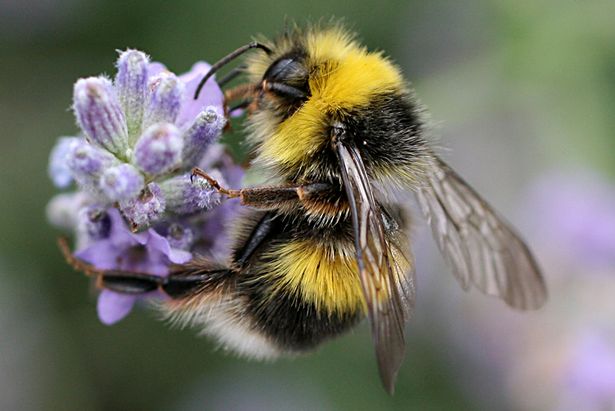-
Tips for becoming a good boxer - November 6, 2020
-
7 expert tips for making your hens night a memorable one - November 6, 2020
-
5 reasons to host your Christmas party on a cruise boat - November 6, 2020
-
What to do when you’re charged with a crime - November 6, 2020
-
Should you get one or multiple dogs? Here’s all you need to know - November 3, 2020
-
A Guide: How to Build Your Very Own Magic Mirror - February 14, 2019
-
Our Top Inspirational Baseball Stars - November 24, 2018
-
Five Tech Tools That Will Help You Turn Your Blog into a Business - November 24, 2018
-
How to Indulge on Vacation without Expanding Your Waist - November 9, 2018
-
5 Strategies for Businesses to Appeal to Today’s Increasingly Mobile-Crazed Customers - November 9, 2018
Buzzing bees can’t resist caffeinated nectar
Bees are just as addicted to the buzz of caffeine as coffee-mad humans, a study has found.
Advertisement
A honey bee foraging at a feeder with caffeinated sucrose solution.
The researchers tested the response of individual bees to feeders that had caffeine and sucrose and to feeders that had only sucrose.
Scientists from the University of Sussex discovered how bees are hooked on caffeine when they carried an experiment, using two sugar feeders placed the same distance from their hive. Bees like caffeine so much that the bees will pass on plants that have a higher level of nectar in order to get nectar from plants that have caffeine in the nectar. Bees encourage other bees to forage from a particular plant with a type of dance; with caffeine present, bees’ dancing quadrupled in relation to that of non-caffeinated bees.
Prof Francis Ratnieks from the University of Sussex, a senior member of the research team explained that previous research had shown that caffeine boosted bees’ memories of the location of a flower. He added that the honeybees then “forage and recruit accordingly”.
“These new findings are a reminder that, while mutually dependent, the interests of plants and pollinators don’t always align”, said study leader Margaret Couvillon, of the University’s Laboratory of Apiculture and Social Insects.
She said that they kept track of which honeybees returned to each of the two feeders by gluing “number tags on their backs, like little football jerseys”.
Bees were more persistent about returning to sites where they’d previously found caffeinated nectar, even after the feeder had run dry.
The biologists learned that the altered behavior of the honeybees can be very beneficial to flowers, but not so much to the honeybees, who will keep on expending energy to get more caffeine. Loyalty to a single source is bad for the bees, good for the plant, as the study authors wrote: “Overall, caffeine causes bees to overestimate forage quality, tempting the colony into sub-optimal foraging strategies, which makes the relationship between pollinator and plant less mutualistic and more exploitative”.
A few plants offer top-shelf nectar, but they face stiff competition when it comes to getting bees’ attention. They are also less likely to explore other potential sources of nectar.
Advertisement
“I could not help but wonder how caffeine would affect the natural behaviors as seen in the field”, Couvillon says, noting that the nectar of many flowering plants contains caffeine in low concentrations. They will want to keep going back to the flowers containing caffeine, benefiting those trousers, but not improving the efficiency of the colony.




























